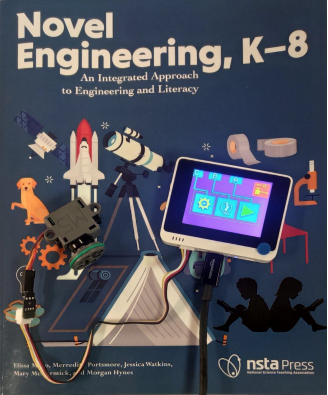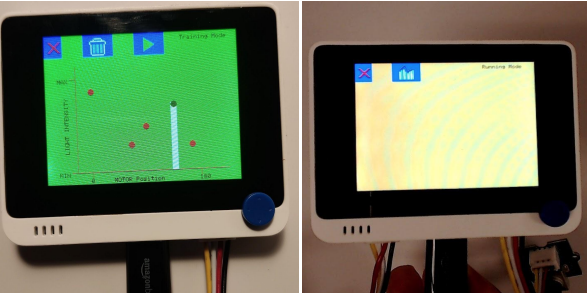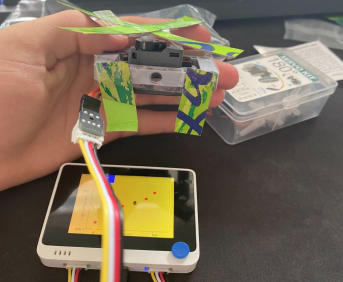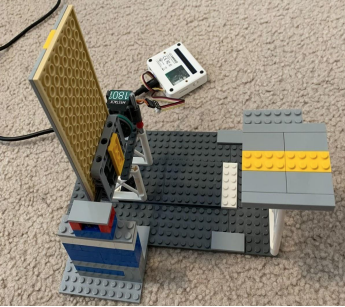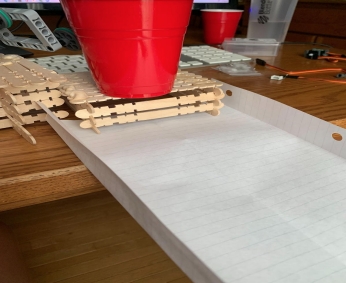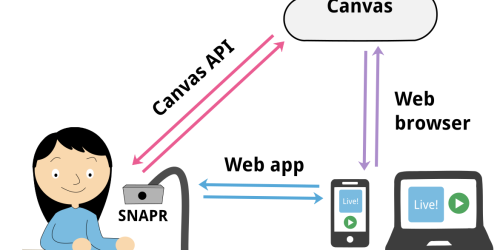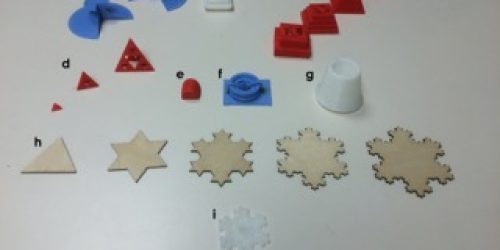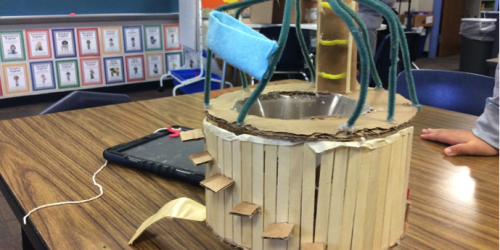Anmol Baruwal is an undergraduate at Springfield College studying Computer Science. He recently completed his 2021 summer internship at the FET(Future Education technology) lab at Tufts CEEO(Centre for Engineering Education and Outreach). He is fascinated by machine learning and its application in building efficient systems. This interest of his led him to work on Smart Motors, an innovative approach to bringing robotics and machine learning into classrooms.
Smart Motors are pre-programmed, trainable motors that can be trained to move to different positions or speeds in response to different sensor inputs. They can be integrated with locally available materials, like sticks, paper, and cardboard, to be used as a tool for engineering and storytelling. This DIY innovation fits perfectly with Novel Engineering, an educational technique, developed at Tufts CEEO, that integrates the idea of project-based design engineering with literacy and reading in the classroom.
One of the goals of the summer work on Smart Motors was to find ways to produce them more cheaply and with a smaller form factor. Anmol worked with Milan Dahal, a PhD student at Tufts CEEO developing Smart Motors with different microprocessors and motor types at heart. They have built prototypes using Seeed Studio’s Xiao, ESP8266, Arduino Uno and similar other microcontrollers on the market. Each processor had its own strength: Xiao was a cheap microcontroller (less than $5) with a smaller footprint – an arrangement of through-holes to electronically attach components to the circuit board, ESP8266 was even cheaper (~ $3) and provided wifi connectivity. But they lacked something that provided visual feedback to the user about the state of the system: a screen.
Anmol assisted in building a Smart Motor using a Wio Terminal, an Arduino- and MicroPython-compatible board that comes in handy with different inbuilt sensors like 3-Axis digital accelerometer, light sensor, and IR emitter which was later on used in designing the engineering activity- Wio With Story. The biggest strength of the Wio is its LCD screen and on-board buttons. The Grove ports on the Wio Terminal make it easier to connect it to a motor, and having inbuilt sensors means users won’t have to spend much time setting up the system.
The bulk of time was spent on researching and developing the user interface that would allow users to intuitively operate the system. The inbuilt buzzer was used to provide audible feedback and the colorful screen was used to communicate various states of the system. The goal was to make the UI user-friendly and language agnostic by using pictorial instructions. The availability of the screen also meant we could show users the data in a graphical way for them to make sense of their system’s state and behavior.
The prototype UI was tested with around 13 undergraduate summer interns working at Tufts CEEO, and the resulting observation and feedback informed further improvements. The final system was used in an EDL (Engineering Design Lab) workshop with 40 high school students from around the globe at the end of the summer.
Anmol assisted in designing and running the workshop, which was aptly named Wio with a Story. The high school students were initiated with a brief introduction to machine learning. All the instructions for both the setup and the prompt were provided on this Wio With Story website. The prompt for the activity was to watch a recording of the classic folk tale “The Three Billy Goats Gruff” on YouTube and use the Smart Motor to solve any problems encountered by the billy goats. The students could use one of the three sensors: a light sensor for sensing brightness, a rotary sensor for sensing twists, and an accelerometer for sensing tilts. They had to build their solution using found materials at home and then submit a report on their findings on the same Wio With Story website.
The most wonderful part of them discovering problems and solutions was their various observations and perspectives on the story. The students identified a diverse range of problems; some encompassed the environmental aspect, some encompassed the engineering aspect, and some were random innovative ideas.
The above picture was taken by one of the high school students, Paschal, where he used his art and craft skills to make a model helicopter using paper and cardboards as a means of transportation for the goats to cross the bridge without being seen by the troll.
Similarly, the picture above was taken by Jason, another student. He identified the problem of having a single bridge to cross the river that was being guarded by the troll, so as a solution to the problem, he made a Lego bridge that can be operated by sunlight.
The above picture was taken by Greg, who identified a drought crisis in the story; as a solution to the problem, he made a watering cup that could hold rainwater and then be used for irrigating the meadows. He used his Wio terminal to throw water from the cup to the grass.
Similarly, there were other astonishing solutions to those problems where the students had integrated different household materials like paper cups, thread, popsicle sticks, and so on for their own story telling. After the students finished their 30-minute project design, they shared their ideas among their friends. All of them were excited to share the aspect of the story that they responded to with their own problem-solving ideas and the unique advantages of their designs. It made the whole session more interactive and informative for them. Finally, the workshop ended with Prof. Chris Rogers answering various questions about artificial intelligence, engineering fields, and anything else inspired by the curiosity of his students.
A complete package of the Wio kit, containing a potentiometer and(?) servo, cost around $48.20 total.
| Product | Cost |
| Wio Kit | $37 |
| Servo Kit | $8 |
| Rotary Angle Sensor Kit | $3.20 |

